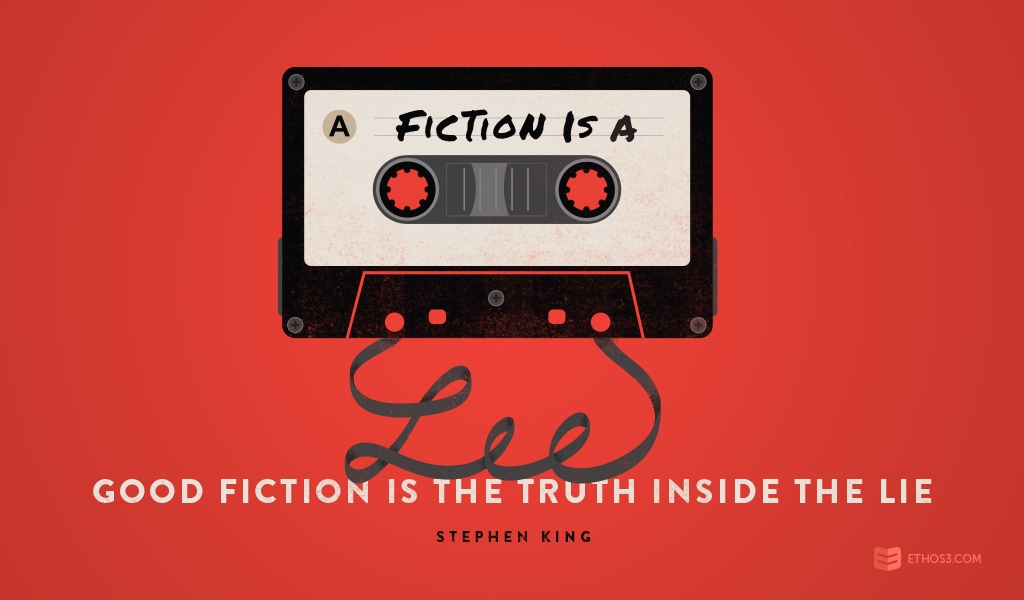The conversation around storytelling within a presentation involves a multitude of different narrative aspects and audience considerations. One storytelling decision, however, surpasses the rest in importance in many presenters’ opinions. And that is the choice to build a narrative upon fact or fiction.
What is fact?
Some definitions of fact include the following:
Something that actually exists
A truth known by actual experience or observation
Something known to exist or to have happened
Source: Dictionary.com
In the presentation space, fact typically requires substantial data and statistics, as well as graphs, charts, and explanatory illustrations. At a bare minimum, fact must be a statement that can be supported by evidence. Information could come from a variety of sources, ranging from scientific journals, published articles, internal and third-party studies and surveys, and more.
How should I incorporate it?
Validate theories
The decision whether or not to base your presentation on fact will likely revolve around 2 components: the purpose of your talk and the type of audience you expect to attend your session. If the purpose of your presentation involves explaining why your method or approach outperforms others, you may want to rely on fact over fiction to convey your message. In addition, if you are presenting to an audience who is more analytical and logical, the fact route is the most effective to take.
Demonstrate credibility
At the beginning of a presentation, a speaker can use facts to as a storytelling tool by incorporating a personal story. Throughout the story, the presenter can drop in facts about himself and let a visual on the screen in a slide of the presentation provide evidence. Show your audience that you are a credible speaker and an expert in your topic with the indirect use of facts within your storytelling strategy.
What is fiction?
Fiction doesn’t have to meet the same standards as fact. According to Dictionary.com, fiction is something feigned, invented, or imagined; an imaginary thing or event, postulated for the purposes of argument or explanation; and the class of literature comprising works of imaginative narration. There are a few types of fiction writers swear by, however, many presenters opt for realistic fiction. Those stories about events that could or do occur in everyday life would find a home in this storytelling fiction classification.

How should I incorporate it?
Create connections
Researchers Geoff Kaufman and Lisa Libby found that fiction does more than allow readers and listeners to engage in perspective-taking. It encourages audiences to participate in the experience of characters – resulting in empathy to a higher degree than perspective-taking. Throughout their studies, Geoff and Libby witnessed participants as they embraced the experience of characters totally unlike them.
“Readers simulate the events of a narrative as though they were a particular character in the story world, adopting the character’s mindset and perspective as the story progresses rather than orienting themselves as an observer or evaluator of the character.” – Geoff Kaufman and Lisa Libby
Fiction helps your presentation audiences identify with a central theme or concept through alignment with the plight of a main character. We would suggest using realistic fiction by basing your presentation storytelling off of client and customer testimonials or experiences. Glean the story arc and highlights from these real-life happenings. But craft a separate narrative where you have a little bit more control over the variables. This allows a presenter to tell a realistic story with the freedom of inserting expressive language and metaphorical elements that would otherwise be non-existent.
Develop dreamers and doers
Harnessing the command of fiction to connect audiences to characters, a presenter can align the goals of the fictional individual with the real individual they are communicating to in a presentation. It helps to mirror a storytelling character off of an average member of your presentation audience. This will allow you to speak indirectly to your audience’s needs without coming off as too “salesy” or “promotional.” According to recent research, the processing of fiction is different than the processing of fact. For example, if a presenter says “He took the idea and ran with it,” he or she will spark their audience members’ motor and premotor cortexes associated with their legs. A presenter who incorporates fiction storytelling elements like idioms and other less literal phrases and sentence structures could inspire audiences to action more effectively than their factual counterparts.
Presentation storytelling is full of narrative decisions and considerations. But the primary driver of any decision should be the purpose of the presentation and the characteristics of your audience. As long as you have a thorough understanding of those 2 aspects, you’ll know which direction to go – fact or fiction. Looking for more storytelling tips? We’ve got them!
Searching for Stories: Storytelling Lessons from Dave Isay
